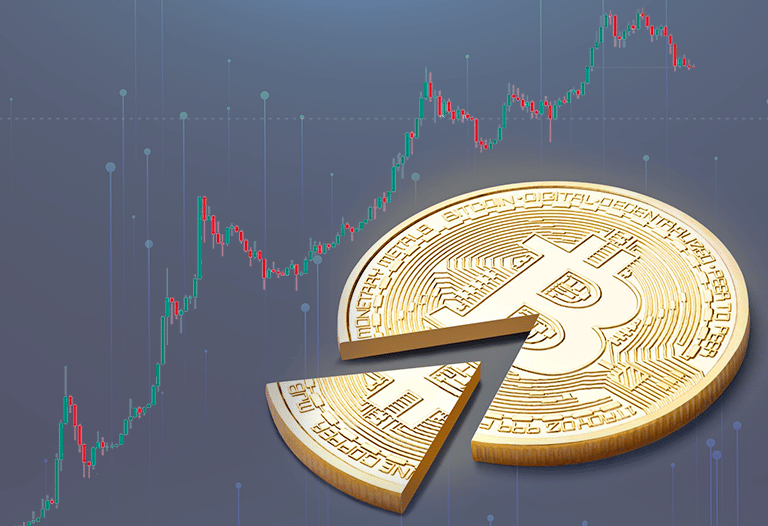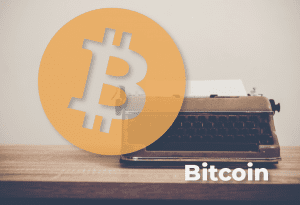
Table of Contents
ToggleIf you have basic knowledge about Bitcoin, you probably know what a Satoshi is. If not, don’t worry. In this article we will tell you everything you need to know about this unit of measurement. A satoshi is the smallest unit of account in bitcoin.
Bitcoin has numerous units of measurement, however, the satoshi is the best known of them all. Surely one of your questions is how many satoshis a Bitcoin has. The first thing you should know is that one Bitcoin can be divided into up to 100,000,000 cents called satoshis. This makes it possible to have balances of up to eight decimal places in Bitcoin. This means that the minimum fraction of Bitcoin is 0.00000001. In case you didn’t know, the minimum unit is named Satoshi in honor of Bitcoin’s creator, Satoshi Nakamoto.
In this article we will see what a satoshi is, how much each one is worth and how much it is in a transaction. Keep reading this article to find out.
What is this unit of measurement?
As mentioned above, the satoshi is the smallest unit we can record in bitcoin blockchains. To represent a satoshi we need a decimal, seven zeros and a 1, followed by one of the bitcoin tickers, which can be Bitcoin (BTC), Bitcoin SV (BSV) or Bitcoin Cash (BCH). To get an idea, it would be represented like this: 0.0000000001 or 1.0 * 1.0 * 10-8 in scientific notation.
SAT or satoshi is an increasingly prevalent term in everyday blockchain and crypto project conversations. In fact, Bitcoin mining software, such as HoneyMiner, pays the reward to miners in SAT. This terminology is not only present in the blockchain, but we can find it even in social networks. An example of this is the creation of the hashtag #StackingSats that is frequently used on the Twitter social network. On the other hand, the Lightning Torch was posted on SAT. Lightning Torch is about a scalability solution for Bitcoin that allows creating a second layer where transactions take place without having to record those transactions on the Bitcoin blockchain itself. These are just a couple of examples using this terminology, but there are many, many more.
Since there are more and more areas in which satoshis are involved, it is the perfect time to learn what they are and how they work.

Who created the Satoshis?
Now you know that when we talk about Satoshis, we are referring to the unit of measurement and not to Satoshi Nakamoto, which is the pseudonym of the creator or creators of Bitcoin. However, the unit of measurement also dates back to the early days of Bitcoin and the BitcoinTalk forum.
The history of the SAT has its origins on November 15, 2010, when BitcoinTalk user Ribuck proposed that 1/100 of a bitcoin, or 0.01 BTC, should be called satoshi. At that time 0.01 BTC was the smallest unit that could be displayed on the interface. Ribuck’s proposal was quite original, however, no BitcoinTalk forum user affirmed or denied the proposal.
It should be noted that at first Ribuck’s comment may have seemed out of place, as it was in the thread of a poll voting on the best Unicode character for bitcoin. The chat was not at all related to units of account and that may have caused it not to be taken seriously.
Ribuck joined the Unicode thread with the following question: what is the plan to subdivide Bitcoins, do we go in thousands like the metric system (millibits, microbits, nanobits)? Nobody answered the question and finally the proposal was lost in the forum despite being very good. However, three months later, specifically on February 10, 2011, Ribuck again posted a similar comment regarding denominations of units of account. This time the thread Ribuck had entered was more appropriate, as it was titled: “More divisibility needed – move the decimal point”.
The response to Ribuck’s proposal in the thread got feedback eight days later, in an entirely new topic titled “Bitcent.” In this new thread, a user named Kolbas on BitcoinTalk decided that it was imperative to start talking about smaller monetary units recorded on the bitcoin blockchain. Kolbas commented on Ribuck’s proposal with the following response, “1 satoshi = 1 microbitcent (smallest denomination), 100 million satoshis = 1 bitcoin. do we agree?”
It was only a matter of time before a user confirmed the new unit of measurement idea with the word “yes” and after this thread, the satoshi was born as a unit of measurement. Officially, 0.0000000001, the smallest unit that could be recorded on the bitcoin blockchain, became known as satoshi from that moment on.

Why was it delayed in being used as a term?
As you know, satoshi became part of the blockchain lexicon and in the crypto industry lexicon in 2011, however, it did not become popular until recently. More and more users are talking about SAT or satoshis in podcasts, cryptocurrency campaigns or hashtags like #StackingSats, but why now?
One of the reasons given by Chris Mezzacappa, who is the CEO of bitConsult, a bitcoin consulting firm, is that this may be due to price trends. In the past, there was an emphasis on “moving the decimal” due to price variation. However, even if the price did not show that much change, it is unlikely that most BTC transactions would be worth more than 0.01 BTC. The bitConsult CEO said he was not sure if satoshis are the ideal BTC figure, but if the industry switches to satoshis as the unit of measurement for BTC it could become the most common measurement.
It is no less true that as consumers we are used to buying products with prices that are easy to read and use as integers. The problem came from the Bitcoin price increase when 5 € became 0.0002464 BTC. On the other hand, if we read this price in sats it would be 25,506 Satoshi (at the time of writing this article). It is not as round figure as euros, but it is easier to read than so many decimals in BTC.
Most users abhor working with fractions and decimals. If the value of products are set only in BTC, it is very likely that merchants can confuse consumers at checkout. Clearly, SAT is here to stay, and it is becoming increasingly evident.






